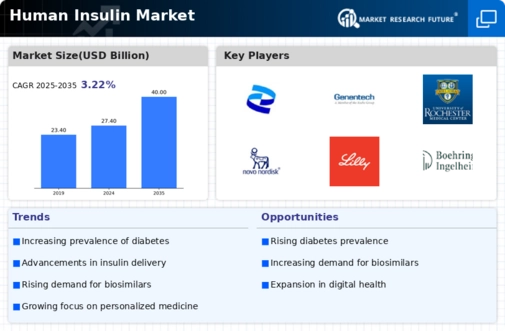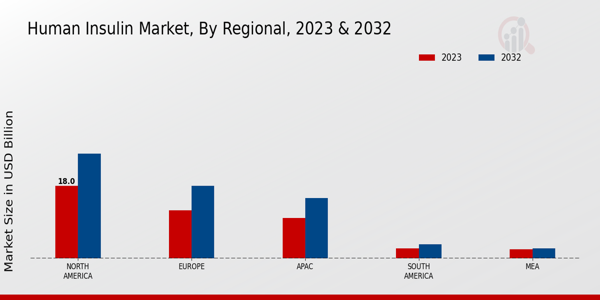Market Analysis
In-depth Analysis of Human Insulin Market Industry Landscape
The human insulin market comprises medications used in the treatment of diabetes, a chronic condition characterized by high blood sugar levels. Human insulin is a hormone produced in the pancreas that regulates glucose metabolism. The market includes various forms of insulin, such as rapid-acting, short-acting, intermediate-acting, and long-acting insulin, catering to the diverse needs of diabetic patients. The global human insulin market has witnessed steady growth in recent years due to factors such as the rising prevalence of diabetes, increasing awareness of treatment options, and advancements in insulin delivery systems. Projections indicate continued growth as diabetes rates continue to rise globally. The prevalence of diabetes, particularly type 2 diabetes, is a primary driver of market dynamics in the human insulin market. As diabetes rates increase worldwide, so does the demand for insulin therapy, creating opportunities for market growth and expansion.
Demographic trends, such as aging populations and sedentary lifestyles, contribute to the growth of the human insulin market. Aging populations are more prone to developing diabetes, driving demand for insulin therapy and related products. Technological advancements in insulin delivery systems have transformed the human insulin market, with innovations such as insulin pens, pumps, and continuous glucose monitoring systems improving treatment outcomes and patient convenience. These advancements drive market growth by enhancing treatment efficacy and patient adherence. The market dynamics of human insulin are influenced by the introduction of insulin analogues, which offer improved pharmacokinetic profiles and fewer side effects compared to traditional human insulin formulations. Insulin analogues include rapid-acting, long-acting, and premixed formulations, providing patients with more options for managing their diabetes. Regulatory requirements and approvals impact market dynamics by influencing product development, manufacturing standards, and market access. Compliance with regulations such as FDA approval in the United States and CE marking in Europe is essential for insulin manufacturers to commercialize their products and enter new markets.
Healthcare expenditure and reimbursement policies influence market dynamics by affecting patient access to insulin therapy and adoption rates. Affordable insulin options and comprehensive insurance coverage contribute to market growth by reducing financial barriers to treatment. Patient education and awareness initiatives play a crucial role in shaping market dynamics by promoting early diagnosis, treatment adherence, and lifestyle modifications among diabetic patients. Education programs, support groups, and digital health platforms empower patients to manage their diabetes effectively, driving demand for insulin therapy. The human insulin market is highly competitive, with numerous pharmaceutical companies competing for market share through product differentiation, pricing strategies, and marketing initiatives. Companies invest in research and development, clinical trials, and marketing campaigns to gain a competitive edge and capture market opportunities. Globalization trends contribute to market expansion by creating opportunities for international collaboration, market entry, and distribution partnerships. Insulin manufacturers seek to expand their geographic footprint, enter new markets, and diversify revenue streams to capitalize on growing diabetes prevalence worldwide. Access to affordable insulin therapy is a key consideration in shaping market dynamics, particularly in low- and middle-income countries where access to healthcare resources may be limited. Initiatives to improve insulin affordability, such as generic formulations, price controls, and philanthropic programs, promote market growth and ensure equitable access to essential diabetes treatments.

















Leave a Comment